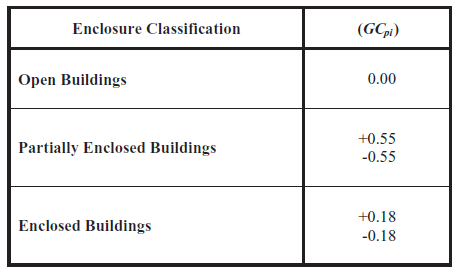Other structures and building appurtenances are defined as rooftop structures rooftop equipment solid freestanding walls freestanding solid signs chimneys tanks open signs lattice framework and trussed towers.
Wind load on open roof vs enclosed.
Applies to enclosed partially enclosed or open buildings of all heights where it is necessary to separate wind loads on to windwoard leeward and side walls.
Applyies to simple diaphragm enclosed buildings with h or 160 ft.
The total area of openings in a wall that receives positive external pressure exceeds the sum of the areas of openings in the balance of the building envelope walls and roof by more than 10 and.
The only difference with enclosed is that your vehicle will be out out of the elements of weather.
The total area of openings in a wall that receives positive external.
Requirements for open or partially enclosed buildings.
Open transport is your more economical and fastest available.
Wind loads by asce 7 16 and 7 10 similar process.
In order for a structure to be sound and secure the foundation roof and walls must be strong and wind resistant.
A building is considered partially enclosed if it complies with both.
The wind pressure then varies on these components and cladding based upon their respective effective wind area.
When building a structure it is important to calculate wind load to ensure that the structure can withstand high winds especially if the building is located in an area known for inclement weather.
Building envelope walls and roof by more than 10 percent.
Internal pressure coefficient.
Whether you ship open or enlcosed your vehicle will be assigned to a qualified carrier and will be insured.
Calculation of wind loads on structures according to asce 7 10.
Assuming the three remaining sides of the open front structure are walls without openings the building will be classified as partially enclosed by the definitions of section 26 2.
Simply there s more of n abundance of open carries vs enclosed.
1 the basic to determine wind loads can be located in figure 26 1 1 of asce 7 16 or shown here in figure 1.
Asce 7 10 provides for two methods for determining the main wind force resisting system mwfrs wind loads for partially enclosed buildings the directional.
Selecting an enclosed or partially open building when it could become a partially enclosed building if doors and windows are blown out during a high wind event could result in a roof system without the appropriate capacity to handle the anticipated higher loads.




























